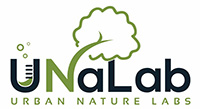 |
Inspiration Card
Co-Creation |
|
Format of the Tool
|

|
C6 Systemic Decision Support Tool (SDST)
| Idea Generation | Stakeholder & Citizen Engagement | Need finding | Planning & Development | Evaluation | Learning |
A scenario simulation tool that allows for the assessment of the potential social, environmental and economic impacts, benefits and co-benefits of nature-based solution (NBS) in the face of population growth and/or climate change. It builds on climate models and city specific data and has been developed by the University of Aveiro.
The SDST is adapted for and applied to UNaLab front-runner cities, as to aid in the co-creation of NBS strategies for global change adaptation in urban and peri-urban areas. The SDST is deployed during co-creation workshops in front-runner cities and will be made available on-line to inform the general public on the impacts, benefits and co-benefits of NBS.
Benefits
• Allows stakeholders to define, visualise, assess and discuss potential social, environmental and economic impacts of no-action as compared to NBS in the situation without (“2015”) or with (2030 and 2050) population growth and/or climate change.
• Allows NBS scenarios to be defined, assessed and discussed with stakeholders at specific stages during the decision-making process, to clarify and validate options and, thus, support an informed decision-making process.
• Builds on the underpinning principle that NBS are co-designed, co-developed and co-implemented in a trans-disciplinary, multi-stakeholder and participatory context as well as systemically embedded within urban landscape planning.
Outcomes
• Contribute to the co-creation of NBS strategies (i.e. planning of NBS across time and space) by all relevant stakeholders, in an interactive, informed, iterative and mutually converging decision-making process.
• Allow planners to embed NBS within their day-to-day urban landscape planning, as it brings together best-available multi-disciplinary information in one user-friendly decision support system.
• Provide publicly and easily accessible information on the potential social, environmental and economic impacts, benefits and co-benefits of NBS in the face of global change.
- Computer
- Connection to internet
- Data Sources and Programmer